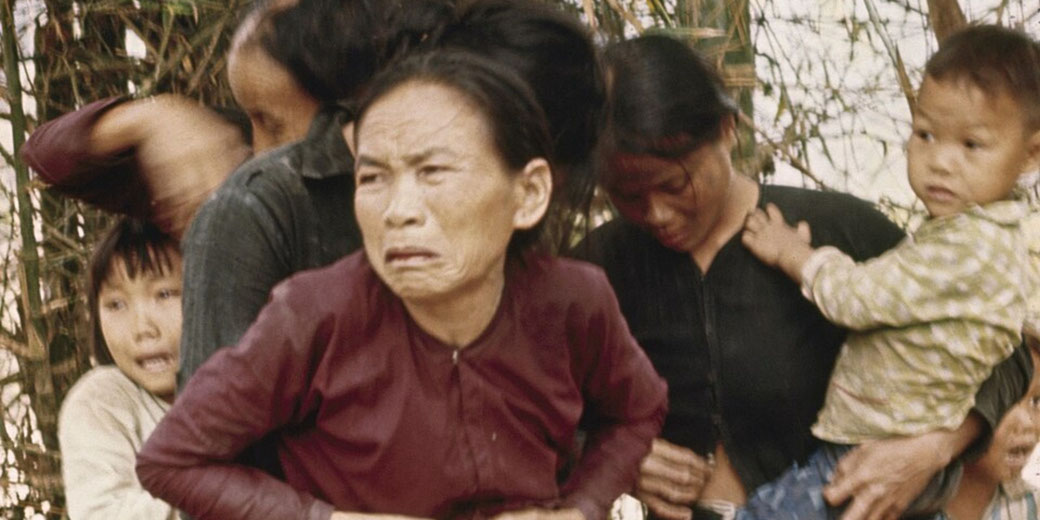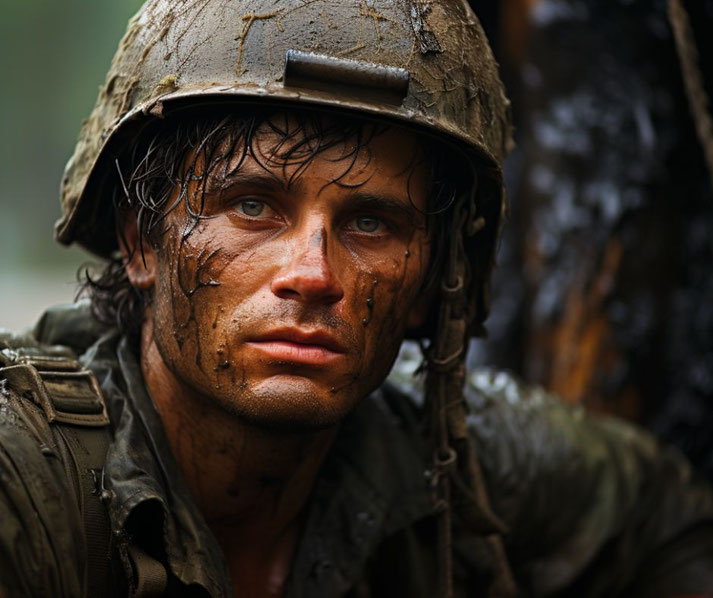Why the My Lai Massacre in the Vietnam War horrified everyday Americans

The My Lai Massacre, a harrowing episode from the Vietnam War, unfolded on March 16, 1968, in the small hamlet of My Lai, located in South Vietnam.
This event, one of the most notorious war crimes committed by U.S. forces during the 20th century, involved the killing of hundreds of unarmed Vietnamese civilians.
The revelation of what happened in My Lai sparked global outrage and significantly influenced public opinion against the Vietnam War.
It raised profound questions about military conduct, the ethics of war, and the psychological impact of combat on soldiers.
The Vietnam War before the massacre
The Vietnam War was a conflict that saw the United States deeply involved in fighting the North Vietnamese forces and their Viet Cong allies in the south.
In the years leading up to the massacre, the war had intensified, with the Viet Cong employing guerrilla tactics, often blending in with the local population, making it difficult for U.S. forces to distinguish between combatants and non-combatants.
This ambiguity laid the groundwork for a tragic misjudgment at My Lai.
In 1967, the U.S. military launched Operation Cedar Falls and Operation Junction City, major campaigns aimed at disrupting Viet Cong strongholds.
Despite these efforts, Viet Cong influence in the Quang Ngai province, where My Lai is located, remained strong.
The region was considered a Viet Cong stronghold, and U.S. forces operating there frequently encountered booby traps, land mines, and ambushes, leading to high casualty rates.
These experiences contributed to a growing sense of frustration and hostility among U.S. troops towards the Vietnamese population, whom they often could not distinguish from the enemy.
Charlie Company, part of the Americal Division, had been in Vietnam since December 1967.
By March 1968, they had suffered significant casualties, heightening their anxiety and antagonism.
The company had not engaged in direct combat with the Viet Cong but had lost many men to mines and booby traps.
This situation fostered a desire for retribution within the ranks, further fueled by the belief that the residents of My Lai were aiding and sheltering Viet Cong fighters.

The brutal events at My Lai
On March 16, 1968, Charlie Company was sent on a mission as part of a larger operation called Task Force Barker.
Their objective was to assault the hamlets of My Lai, which were believed to be hosting a Viet Cong battalion.
The soldiers were briefed that all friendly forces would have left the area and that anyone found in My Lai could be considered a Viet Cong or sympathizer.
On the morning of March 16, 1968, the soldiers of Charlie Company, led by Lieutenant William Calley, entered the hamlet of My Lai in the Quang Ngai province of South Vietnam.
As the soldiers moved into My Lai, they found no Viet Cong soldiers. Instead, they encountered unarmed villagers, mostly women, children, and elderly people.
Despite the absence of any hostile action or threat, the troops began rounding up the villagers.
Over the next few hours, a horrifying sequence of events unfolded. The U.S. soldiers systematically killed hundreds of civilians.
The brutality included not just shootings but also rapes, mutilation, and other acts of violence.
Homes were set ablaze, livestock was killed, and the village was decimated.
The massacre continued until three American helicopter crew members intervened.
Warrant Officer Hugh Thompson, along with his crew, Glenn Andreotta and Lawrence Colburn, witnessed the killings from their helicopter.
Disturbed by what they saw, they landed between the soldiers and the remaining villagers, confronting the troops and even threatening to open fire on them if they did not stop the killings.
Thompson and his crew then evacuated several Vietnamese civilians, actions for which they were later recognized and commended.
The exact number of victims in the My Lai Massacre is still debated, with estimates ranging from 347 to over 500.
The majority of those killed were women, children (including babies), and elderly people.
The brutality and scale of the massacre were shocking, and the event remains one of the most infamous war crimes committed by U.S. forces.
How the US Army tried to cover-up the event
In the immediate aftermath of the My Lai Massacre, the U.S. military's response was initially one of concealment.
The soldiers who participated in the massacre were sworn to secrecy, and the official reports filed by the commanding officers grossly understated the civilian deaths, attributing them to enemy fire.
The Army's initial report, filed by the Americal Division, claimed that the operation at My Lai had been successful, with a large number of Viet Cong combatants killed.
The truth about what happened at My Lai began to surface only after soldiers who had witnessed the event started speaking about it upon their return to the United States.
In March 1969, a year after the massacre, Ronald Ridenhour, a former soldier who had heard about the incident from fellow soldiers, wrote a letter detailing the atrocities to President Nixon, the Pentagon, the State Department, and members of Congress.
This letter prompted an official investigation.
The sudden exposure of the massacre
The My Lai Massacre remained largely unknown to the public until November 1969, when investigative journalist Seymour Hersh broke the story, sparking a media frenzy and public outrage.
Hersh's report, first published by the Dispatch News Service and then in newspapers worldwide, detailed the events of the massacre, including the killing of hundreds of unarmed Vietnamese civilians.
The story was based on interviews with soldiers who were at My Lai and on the investigation that followed Ronald Ridenhour's letter to Congress and military leaders.
The public reaction to Hersh's revelations was one of shock and disbelief. The graphic details of the massacre, particularly the extent of the brutality against women and children, challenged the American public's perception of their country's role in Vietnam.
This exposure came at a time when the anti-war movement in the United States was gaining momentum, and the My Lai story further fueled opposition to the war.
The media played a crucial role in shaping the public discourse surrounding the massacre.
Following Hersh's report, newspapers and television networks across the country and around the world covered the story extensively.
In addition to reporting on the massacre itself, the media also focused on the subsequent military investigation and the court-martial of Lieutenant William Calley.
In addition to written reports, the impact of the My Lai story was amplified by the release of graphic photographs taken by Army photographer Ronald Haeberle on the day of the massacre.
These photographs, which showed the bodies of slain villagers, including children, were published in newspapers and magazines, bringing a visual dimension to the reports that made the events at My Lai even more real and horrifying for the public.
Bringing the guilty party to trial
The Peers Commission, led by Lieutenant General William R. Peers, was established in November 1969 to investigate the massacre and the subsequent cover-up.
The commission's report, submitted in March 1970, concluded that the killings at My Lai were indeed a massacre and that a cover-up had occurred.
It recommended that charges be brought against 28 officers and two non-commissioned officers.
The most prominent trial was that of Lieutenant William Calley, the platoon leader accused of directing the killings.
His court-martial began in November 1970 and garnered significant media attention.
Calley was charged with the premeditated murder of 109 Vietnamese civilians. In March 1971, he was found guilty of the murder of 22 civilians and sentenced to life in prison.
However, his sentence was repeatedly reduced, and he ultimately served only three and a half years under house arrest.
Other trials followed, but none resulted in convictions as significant as Calley's.
Captain Ernest Medina, Calley's commanding officer, was acquitted of all charges. Many of the other soldiers implicated in the massacre either had their charges dropped or were acquitted.
The outcomes of these trials were met with mixed reactions. Some saw Calley's conviction as a necessary response to a heinous war crime, while others viewed him as a scapegoat for a broader failure of military leadership and policy.

How the soldiers themselves provided evidence
Among the American soldiers who were personally involved in the massacre, some would later come forward to recount the events.
Perhaps the most notable was Warrant Officer Hugh Thompson, the helicopter pilot who, along with his crew members Glenn Andreotta and Lawrence Colburn, intervened to stop the killings.
Thompson's testimony provided a critical perspective on the events, highlighting both the atrocities committed and the efforts made by a few to halt them.
On the Vietnamese side, the stories of the survivors were heart-wrenching. Pham Thi Thuan, a villager, recalled how she lost her family in the massacre and narrowly escaped death herself.
Her account, along with others, painted a vivid picture of the chaos and horror that unfolded.
These stories often detailed the indiscriminate killing of civilians, including children and the elderly, and other acts of violence that left a deep scar on the community.
Another significant figure in bringing the My Lai story to light was Ronald Ridenhour, a former soldier who, after hearing accounts of the massacre from fellow soldiers, began a personal campaign to expose the truth.
His efforts culminated in a letter he sent to Congress, the Pentagon, and the White House in 1969, detailing the accounts he had gathered and demanding an investigation.
Ridenhour's actions were instrumental in initiating the official inquiry that followed.
The impact on the Vietnam War
The My Lai Massacre had profound long-term impacts and left a lasting legacy, both in the United States and internationally.
One of the most immediate effects was its influence on public opinion regarding the Vietnam War.
The graphic details of the massacre, widely disseminated through the media, fueled anti-war sentiment and led many to question the morality and objectives of U.S. involvement in Vietnam.
This shift in public opinion was a significant factor in the growing movement against the war, which eventually played a role in the decision to withdraw U.S. troops from Vietnam.
In the realm of military operations and ethics, the My Lai Massacre led to substantial changes.
The U.S. military revised its training programs to put greater emphasis on the laws of war and the moral and ethical responsibilities of soldiers.
There was a renewed focus on leadership accountability and the importance of command responsibility.
These changes were aimed at ensuring that such atrocities would not be repeated and that soldiers would be better prepared to make ethical decisions in complex and stressful combat situations.
Culturally, My Lai became a symbol of the horrors of war and the potential for human rights abuses within military conflicts.
It has been the subject of numerous books, documentaries, and films, contributing to a broader understanding and awareness of the consequences of war.
The massacre is frequently studied in academic and military institutions as a case study in ethics and leadership.
In Vietnam, My Lai has been memorialized to honor the victims and to serve as a reminder of the tragedy.
The site of the massacre is now a museum and a memorial, attracting visitors from around the world.
This act of remembrance is part of Vietnam's broader effort to heal the wounds of the war and to remember the civilian suffering that occurred.
What do you need help with?
Download ready-to-use digital learning resources
Copyright © History Skills 2014-2025.
Contact via email
With the exception of links to external sites, some historical sources and extracts from specific publications, all content on this website is copyrighted by History Skills. This content may not be copied, republished or redistributed without written permission from the website creator. Please use the Contact page to obtain relevant permission.





